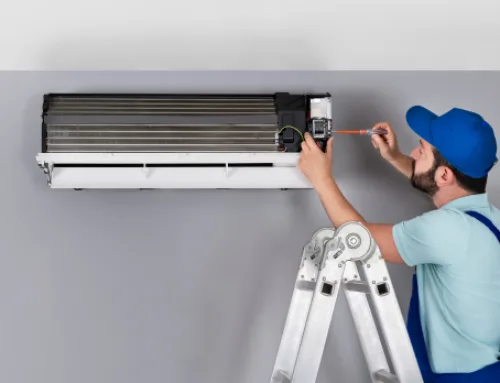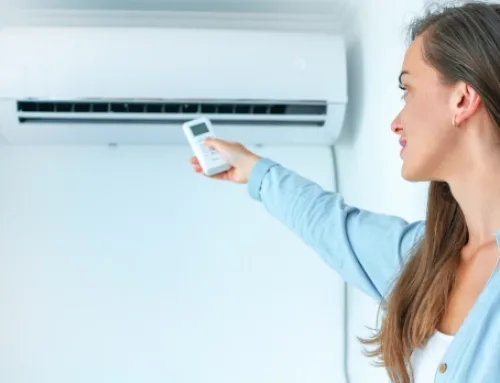Winter in Canada can be brutally cold, so finding the proper thermostat settings for comfort and efficiency is essential.
The chilly temperatures demand a careful balance between warmth and energy conservation. Setting your thermostat too high can lead to excessive heating bills, while keeping it too low may leave you shivering.
In this blog, we will explore the recommended thermostat settings to help you stay cozy without breaking the bank.
From daytime temperatures to nighttime adjustments, let’s explore the perfect thermostat settings for a snug winter in the Great White North!
Understanding the Ideal Temperature Range in Canada
Canada experiences a diverse climate with varying ideal temperature ranges. In the winter, temperatures can drop significantly, reaching as low as -40°C (−40 °F) in several regions.
Meanwhile, temperatures rise to a more comfortable range during the summer, typically between 25 to 30 °C (77 to 86 °F).
Spring and fall provide milder conditions, ranging from 5°C to 20°C. Coastal areas like Vancouver enjoy milder winters, rarely dropping below freezing.
In contrast, the northern regions, such as the Yukon and Northwest territories, endure colder temperatures.
Therefore, the ideal temperature in Canada depends on the season and specific geographic location, which reflects the country’s vast and varied climate.
Recommended Daytime Thermostat Settings in Canada
In Canada, the recommended daytime thermostat settings during colder months typically range between 20-22°C. This helps maintain a comfortable indoor temperature while conserving energy.
Adjusting your thermostat to the lower end of this range when you are away can further save on heating costs.
Remember, a cozy home does not mean overheating, so finding a balance ensures comfort and energy efficiency.
Let us explore a few beneficial tips to keep your house comfortable without excessive energy consumption during the chilly Canadian winter.
Tips for maintaining comfort without excessive energy consumption in Canada
- Set your thermostat to a lower temperature when you’re away and at night to save on heating costs.
- Use programmable thermostats to adjust temperatures based on your daily schedule automatically.
- Seal gaps and insulate windows to prevent heat loss, reducing the need for constant heating.
- Optimize your heating system with regular maintenance to ensure efficiency.
- Consider zone heating for targeted warmth in occupied areas, avoiding heating unused spaces.
Recommended Nighttime Thermostat Settings
For a cozy night’s sleep in Canada, set your thermostat between 15-19°C (60-67°F). Cooler temperatures are generally more conducive to rest.
It is advisable to avoid overheating your room because it might disrupt your sleep.
To save energy and money, program your thermostat to lower temperatures at night when bundled up in bed.
Moreover, close the curtains in your room to keep out cold drafts to prevent unnecessary heat loss.
Ensure windows and doors are properly sealed to maintain a comfortable temperature without overworking the heater.
A balanced approach to thermostat settings assures restful sleep and energy efficiency.
Zone Heating and Its Advantages
Zone heating is a way to save energy by heating only specific areas of a home rather than the entire space.
Instead of warming the whole house, zone heating lets you focus on the rooms you use the most. This is achieved by strategically placing individual heating sources, such as space heaters or fireplace inserts, in different zones.
You can reduce energy consumption and lower heating costs by heating only the areas where people are present.
It is a cost-effective and energy-efficient approach that offers personalized comfort while reducing wasted energy in unused spaces.
Here are a few advantages of zone heating:
- Saves energy by heating only the rooms in use
- Reduces utility bills by targeting specific areas
- Provides personalized comfort for different preferences
- Minimizes heat loss in unoccupied spaces
- Enhances overall energy efficiency at home
Weather-Based Thermostat Adjustments
Adjusting the thermostat based on the weather is a smart way to stay comfortable and save energy.
When it is hot outside, set the thermostat higher to use less air conditioning. In cold weather, lower the thermostat to save on heating. This helps your house stay cozy without wasting energy.
You can also install a programmable thermostat to adjust temperatures automatically. By syncing with the weather, you save money and contribute to a greener planet. It’s a small change for big benefits.
Best Practices for Setting Your Thermostat During Winter in Canada
Setting your thermostat effectively during winter in Canada can help you maintain a comfortable and energy-efficient home.
Here are a few practices you can follow to set your thermostat during winter in Canada:
Optimal Temperature Settings
During winters, keep your home comfortable and save energy by setting your thermostat between 18-20°C (64-68°F) when awake. When you’re away or asleep, set it a bit lower. This helps cut energy use and keeps you warm enough.
Warm-Up Schedule
In Canada’s chilly winter, set your thermostat to warm the house before waking up and lower it at bedtime. This optimizes comfort and saves energy.
Starting the heat early ensures a cozy morning, and cooling down at night reduces unnecessary warmth. This simple schedule keeps you comfortable while being energy-efficient in the chilly weather.
Seal Leaks and Insulate
In Canada, where winters can be extremely chilly, setting your thermostat right is crucial for keeping your house warm and cozy without spending too much energy.
A good practice is to make sure your home is well insulated. This means checking for gaps or leaks around windows, doors, and walls and sealing them up.
Doing this prevents the cold air from sneaking in and the warm air from escaping and helps your thermostat to work better.
Regular HVAC Maintenance
Setting your thermostat during winter in Canada is essential for maintaining a comfortable and energy-efficient house.
One best practice is to schedule regular maintenance for your heating system to ensure it operates efficiently in the chilly weather.
Make it a habit to clean and replace filters to maintain optimal airflow. This simple step helps you keep your house warm and ensure your heating system works at its best, saving energy and keeping your winter energy bills in check.
Tips for Maximizing Energy Efficiency In Your Home During Winter in Canada
Maximizing energy efficiency in your house during winter in Canada is essential for cost savings and environmental sustainability. Here are some tips to help you achieve this:
Regularly Clean Vents and Radiators
To maximize energy efficiency in your house during winter in Canada, cleaning and maintaining key components regularly is essential.
Keep vents and radiators clean to ensure that heat circulates efficiently throughout your home to prevent any blockages that may hinder warmth.
Additionally, make it a habit to clean air filters in heating systems and appliances regularly. This simple step assures that your heating equipment operates at its best.
It also reduces energy consumption and keeps your house comfortably warm during the chilly winter months.
Use Energy-Efficient Windows
Installing double-pane or energy-efficient windows will help you maximize energy efficiency in your home during winter months in Canada.
These windows help to reduce heat loss and keep your house warmer and more comfortable.
Moreover, thermal curtains can offer extra insulation around your windows, preventing heating from escaping.
Install Programmable Thermostat
A programmable thermostat is a handy device that helps you set specific temperatures for different times of the day.
For instance, you can program it to lower the temperature while you are away or sleeping and raise it at home.
This simple device can help you maximize energy efficiency in your home during winter in Canada.
Layer Clothing
Try dressing in layers during the chilly Canadian winter to stay warm indoors. Instead of cranking up the thermostat, consider wearing multiple layers of clothing to trap and retain heat. This simple tip helps you stay comfortable while keeping the temperature lower and reducing the need for excessive heating.
Final Words
In conclusion, setting the right thermostat temperature during Canadian winters is crucial for comfort and energy efficiency.
By adjusting your thermostat to around 20°C (68°F) at home and lowering it when you are away, you can save on energy costs without compromising your comfort.
Moreover, sealing drafts and assuring proper insulation will further enhance your house’s coziness.
We at Infiniti Home Comfort have 15 years of experience repairing and maintaining your heating system and guarantee 100% customer satisfaction. Our customers’ trust and referral speak volumes, making their comfort our ultimate reward.




